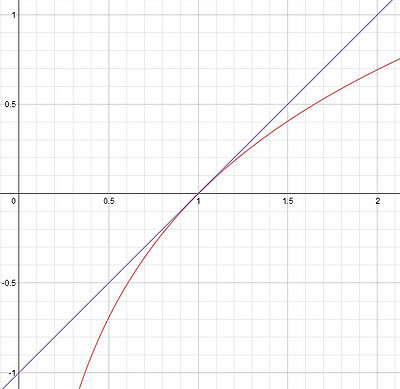Science:Math Exam Resources/Courses/MATH110/April 2012/Question 02 (b)
{{#incat:MER QGQ flag|{{#incat:MER QGH flag|{{#incat:MER QGS flag|}}}}}}
• Q1 • Q2 (a) • Q2 (b) • Q3 (a) • Q3 (b) • Q4 • Q5 (a) • Q5 (b) • Q5 (c) • Q5 (d) • Q5 (e) • Q5 (f) • Q5 (g) • Q6 (a) • Q6 (b) • Q7 • Q8 • Q9 •
Question 02 (b) |
|---|
|
Is your estimate from part (a) greater than, less than, or equal to the actual value of ? Justify your answer. |
|
Make sure you understand the problem fully: What is the question asking you to do? Are there specific conditions or constraints that you should take note of? How will you know if your answer is correct from your work only? Can you rephrase the question in your own words in a way that makes sense to you? |
|
If you are stuck, check the hint below. Consider it for a while. Does it give you a new idea on how to approach the problem? If so, try it! |
Hint |
|---|
|
Try drawing a picture of and your linearization. |
|
Checking a solution serves two purposes: helping you if, after having used the hint, you still are stuck on the problem; or if you have solved the problem and would like to check your work.
|
Solution |
|---|
|
If you draw a picture of and the linear approximation (see below), you can see that the linear approximation is above the graph of . This means that the value of the linear approximation will be greater than the value of the actual function. Another way of showing this is to prove that is concave down. A concave down function has all of its tangent lines above the graph of the function and so the same conclusion follows as above. We know is concave down because its second derivative is which is always negative. |
{{#incat:MER CT flag||
}}






